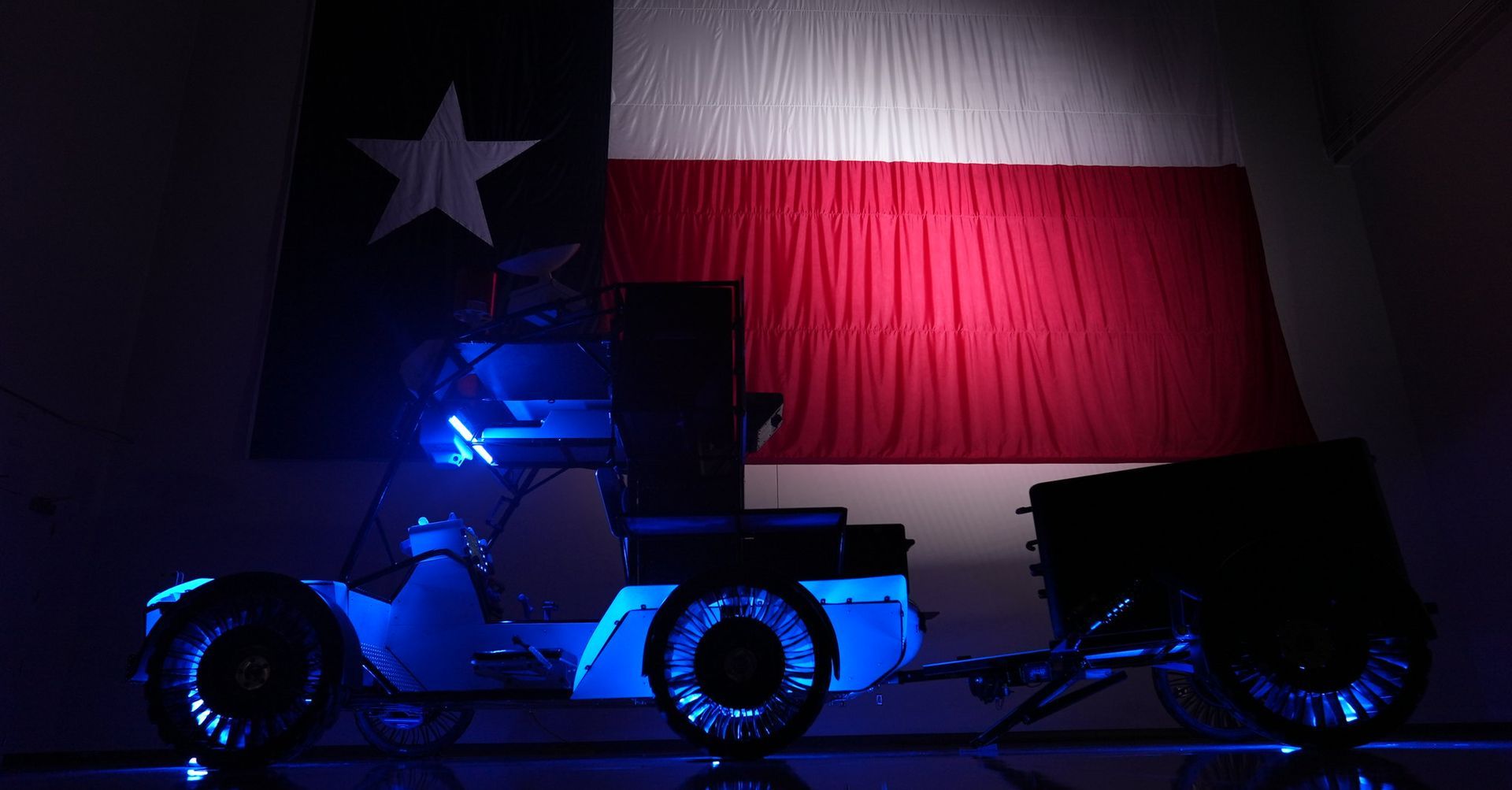
15 November 2024
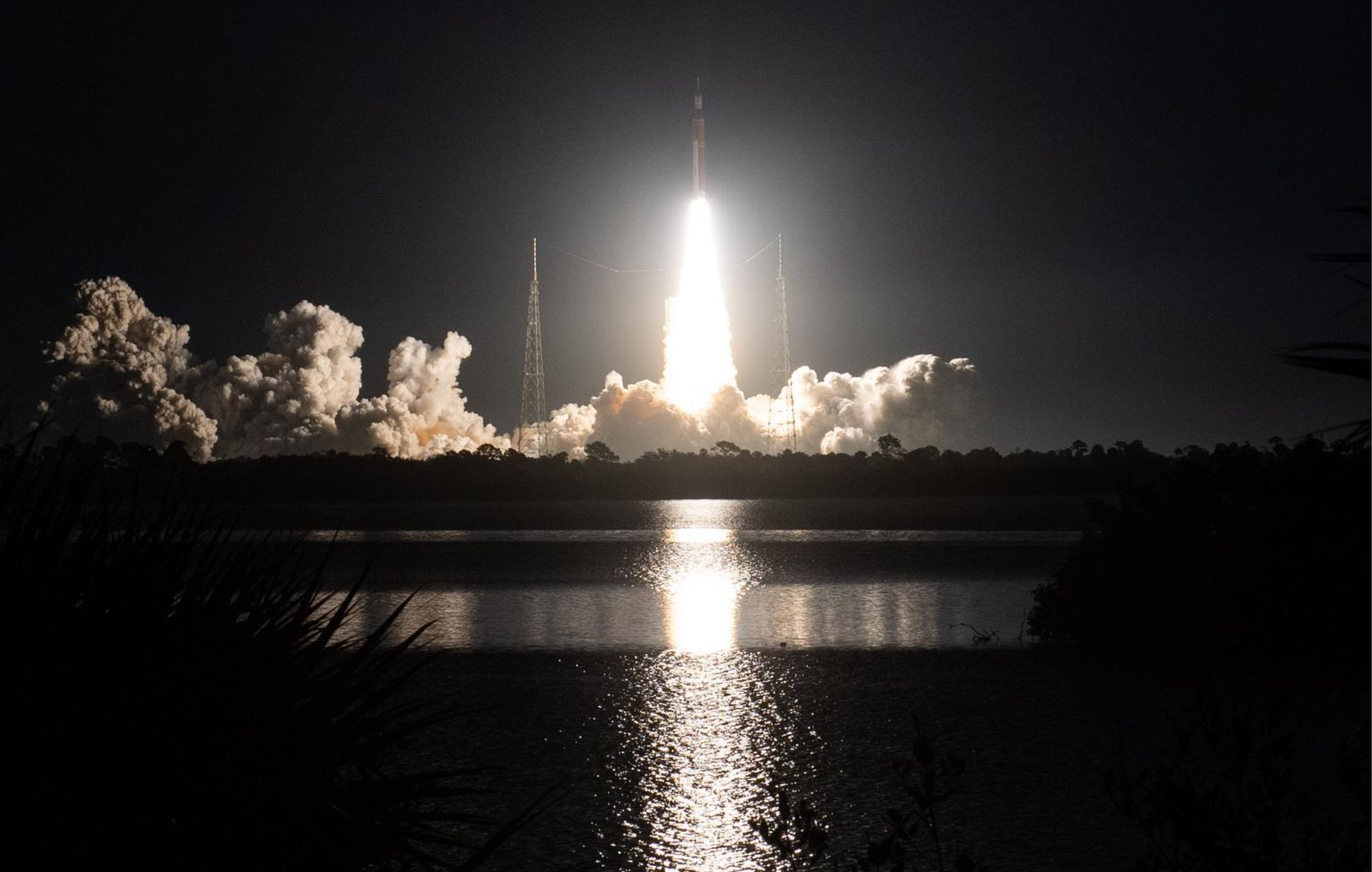
(Image: NASA/Bill Ingalls)
As expected, this week, President-elect Donald Trump appointed Elon Musk to head the new US Department of Government Efficiency (DOGE), tasked with driving structural reform, cutting federal costs, and introducing a “never-before-seen” entrepreneurial approach, according to Trump. Musk, concerned about rising US debt, claims to have already identified $2 trillion in potential government savings, and his enhanced role is likely to impact US space strategy significantly in the coming years.
According to Space.com, policy experts expect the Trump administration to foster a friendlier regulatory environment, benefiting Musk’s ventures, including SpaceX, which has faced Starship launch delays from the Federal Aviation Authority (FAA).
Reports suggest that Musk has already requested senior government positions for SpaceX employees, with Casey Dreier, chief of space policy at The Planetary Society, noting that regulatory changes could “benefit the pace of Starship development.” SpaceX is gearing up for its next Starship test flight on November 18, and has announced an ambitious goal of around 25 launches next year, aiming for full Starship recovery.
SpaceX also envisions expanding the U.S. footprint in Mars exploration. In September, Musk indicated they plan to launch Starships to Mars by 2026. Also, a presentation given this week during the meeting of the Mars Exploration Program Analysis Group pitched SpaceX’s “Marslink”, a Starlink network for Mars to ensure communication and interoperability between ground and orbital assets. Currently, Starlink dominates low Earth orbit, accounting for 7,000 of the 10,000 active satellites.
Will Renewed US Leadership in Space Come at the Expense of Science and Sustainability?
US leadership in space may be strengthened under the new president, with a deregulated commercial sector potentially benefiting SpaceX, already the leader in the field.
However, not all areas of US space will be spared from challenges. NASA, for example, is facing dated infrastructure, inefficient management, and difficulties keeping up with rapid technological advancements, according to a September report from the US National Academies of Sciences, Engineering, and Medicine. Budget cuts from Congress add to these issues.
These challenges are evident in delays and cost overruns in the Mars Sample Return project and the cancellation of the NASA VIPER lunar rover. A recent article from The Register suggests that, under the Trump administration, U.S. space leadership could come at the expense of Earth science missions and climate research.
Shifting away from science and climate research in space could be a major setback, especially as global initiatives, such as through the UN, actively highlight the benefits of space technology in achieving the Sustainable Development Goals (SDGs), including SDG 13 on Climate Action. In partnership with the European Space Agency, the UN Office for Outer Space Affairs published a compendium detailing how space can help achieve all 17 SDGs (compendium can be found here). World Space Week in October also underscored the transformative impact of space technology in the fight against climate change.
Nonetheless, by boosting US investment in projects like the Artemis program and fostering commercial innovation in space, the US could accelerate its efforts to outpace China in the evolving space and lunar race.
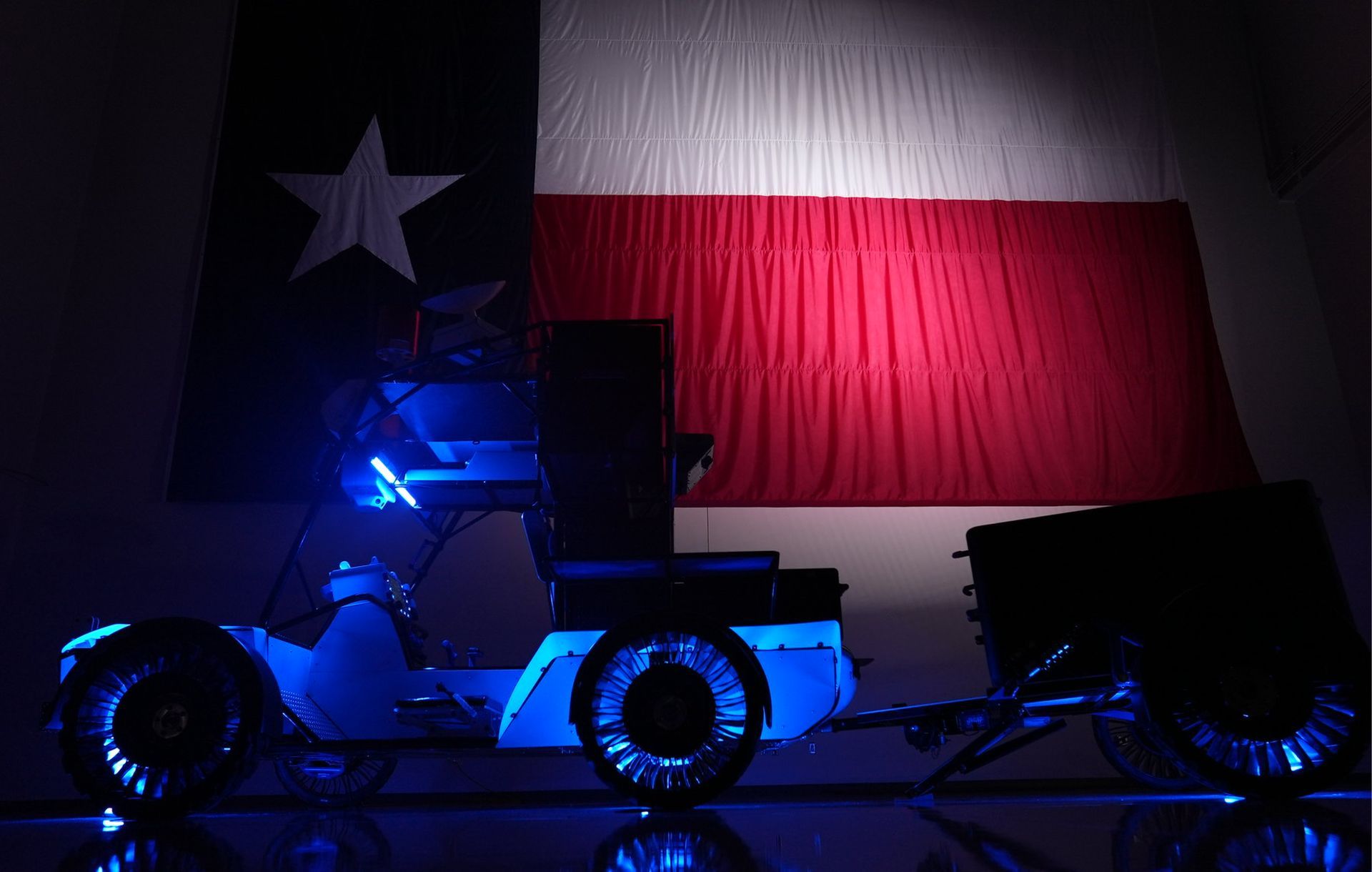
(Image: Intuitive Machines)
Intuitive Machines: an example of commercial success?
Alongside SpaceX, the new administration may also find strong support for companies such as Intuitive Machines and Firefly Aerospace. The former achieved their first successful commercial lunar landing in February, while Firefly is set to attempt its first lunar landing as early as December.
This week, Intuitive Machines also revealed its prototype for their crewed lunar rover, developed under NASA's Lunar Terrain Vehicle (LTV) program. The Reusable Autonomous Crewed Exploration Rover (RACER) can carry two astronauts and up to 400 kg of cargo, with an additional trailer capable of transporting 800 kg.
While commercial U.S. space companies like Intuitive Machines are leading the charge, they still depend on NASA funding through initiatives like the Commercial Lunar Payload Services and LTV programs for financial and customer support—areas the Trump administration may look to strengthen.
However, Intuitive Machines CEO Steve Altemus this week emphasised that his company is poised to offer a "full stack" of services, providing everything needed for missions to the Moon, on the Moon, and around it. This positions Intuitive Machines not only as a NASA contractor but as a fully commercial space services provider.
In addition to their successful lunar landing, Intuitive Machines has two more missions scheduled for 2025, is one of three teams chosen to develop a lunar rover under NASA’s LTV program, and, in September, secured a $4.8 billion contract with NASA to build a satellite constellation for navigation and communications on lunar missions.
The company is positioning itself as a key player in lunar exploration, providing delivery services to the Moon, mobility on its surface, and critical communications infrastructure via lunar orbit—essentially creating a "platform for a lunar economy," as described by Altemus.

(Image: Pixabay)
Trump’s Re-election Sparks Crypto Surge, Potential Use of Blockchain and Dogecoin in Space
Since Donald Trump’s re-election last week, there have been notable market reactions, with the US dollar reaching its highest level in a year and speculation on how his presidency might affect global dynamics. Investors also poured money into cryptocurrencies, pushing Bitcoin to record highs above $90,000.
Trump has previously announced ambitious plans for Bitcoin, stating that under his presidency, the US would retain all its Bitcoin reserves and adding, “If crypto is going to define the future, I want it to be mined, minted, and made in the USA.”
However, it was Elon Musk’s favoured cryptocurrency, Dogecoin, that also gained attention this week, outperforming Bitcoin and reaching new three-year highs. The value of Dogecoin—sharing the same trading acronym 'DOGE' as the new government advisory department—surged after the announcement that Musk would head it.
Musk has previously incorporated Dogecoin into Tesla, using it as payment for certain products, and accepted a Dogecoin payment from Geometric Energy Corporation for a delay in delivering their DOGE-1 satellite due to launch with SpaceX. The DOGE-1 mission, fully funded by Dogecoin, will collect lunar-spatial intelligence and display digital art and ads on a screen, which will be broadcast back to Earth.
Also, former SpaceX Vice President Tom Ochinero has previously said DOGE-1 “will demonstrate the application of cryptocurrency beyond Earth orbit and set the foundation for interplanetary commerce.”
Dogecoin isn’t the only blockchain application being explored for space. Marscoin aims to create a “decentralized, autonomous currency system” to overcome communication delays and resource limitations, while SpaceXcoin seeks to “dominate the next generation's multiplanetary exchange systems.”
Meanwhile, organisations like MoonDAO and SpaceDAO are exploring how to build transparent governance systems using Decentralised Autonomous Organisations (DAOs), blockchain-based systems that enable distributed governance through smart contracts and tokenised voting.
It’s unclear how the Trump administration might incorporate blockchain and cryptocurrencies with their plans for the space economy, but we do know about Musk’s historic support for Dogecoin and his goal to put “a literal Dogecoin on the literal moon” (2021 x.com post).

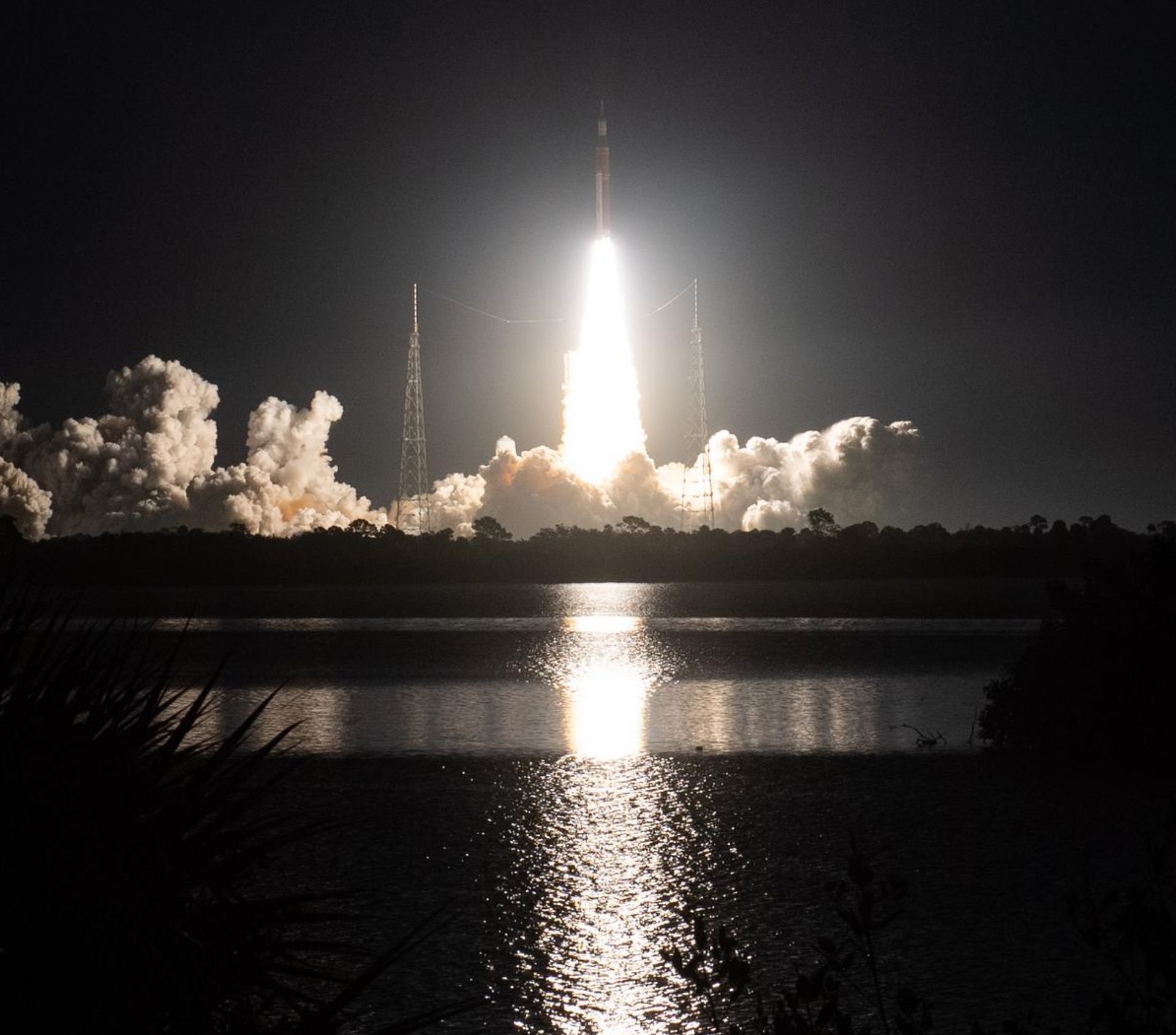
(Image Render: NASA/Bill Ingalls)
15 November 2024
Trump’s Space Priorities, Intuitive Machines Lunar Rover, Musk Heads US Efficiency Dept, Dogecoin Boom Reignites Interest in Space-Based Blockchain - Space News Roundup

As expected, this week, President-elect Donald Trump appointed Elon Musk to head the new US Department of Government Efficiency (DOGE), tasked with driving structural reform, cutting federal costs, and introducing a “never-before-seen” entrepreneurial approach, according to Trump. Musk, concerned about rising US debt, claims to have already identified $2 trillion in potential government savings, and his enhanced role is likely to impact US space strategy significantly in the coming years.
According to Space.com, policy experts expect the Trump administration to foster a friendlier regulatory environment, benefiting Musk’s ventures, including SpaceX, which has faced Starship launch delays from the Federal Aviation Authority (FAA).
Reports suggest that Musk has already requested senior government positions for SpaceX employees, with Casey Dreier, chief of space policy at The Planetary Society, noting that regulatory changes could “benefit the pace of Starship development.” SpaceX is gearing up for its next Starship test flight on November 18, and has announced an ambitious goal of around 25 launches next year, aiming for full Starship recovery.
SpaceX also envisions expanding the U.S. footprint in Mars exploration. In September, Musk indicated they plan to launch Starships to Mars by 2026. Also, a presentation given this week during the meeting of the Mars Exploration Program Analysis Group pitched SpaceX’s “Marslink”, a Starlink network for Mars to ensure communication and interoperability between ground and orbital assets. Currently, Starlink dominates low Earth orbit, accounting for 7,000 of the 10,000 active satellites.
Will Renewed US Leadership in Space Come at the Expense of Science and Sustainability?
US leadership in space may be strengthened under the new president, with a deregulated commercial sector potentially benefiting SpaceX, already the leader in the field.
However, not all areas of US space will be spared from challenges. NASA, for example, is facing dated infrastructure, inefficient management, and difficulties keeping up with rapid technological advancements, according to a September report from the US National Academies of Sciences, Engineering, and Medicine. Budget cuts from Congress add to these issues.
These challenges are evident in delays and cost overruns in the Mars Sample Return project and the cancellation of the NASA VIPER lunar rover. A recent article from The Register suggests that, under the Trump administration, U.S. space leadership could come at the expense of Earth science missions and climate research.
Shifting away from science and climate research in space could be a major setback, especially as global initiatives, such as through the UN, actively highlight the benefits of space technology in achieving the Sustainable Development Goals (SDGs), including SDG 13 on Climate Action. In partnership with the European Space Agency, the UN Office for Outer Space Affairs published a compendium detailing how space can help achieve all 17 SDGs (compendium can be found here). World Space Week in October also underscored the transformative impact of space technology in the fight against climate change.
Nonetheless, by boosting US investment in projects like the Artemis program and fostering commercial innovation in space, the US could accelerate its efforts to outpace China in the evolving space and lunar race.
Intuitive Machines: an example of commercial success?
Alongside SpaceX, the new administration may also find strong support for companies such as Intuitive Machines and Firefly Aerospace. The former achieved their first successful commercial lunar landing in February, while Firefly is set to attempt its first lunar landing as early as December.
This week, Intuitive Machines also revealed its prototype for their crewed lunar rover, developed under NASA's Lunar Terrain Vehicle (LTV) program. The Reusable Autonomous Crewed Exploration Rover (RACER) can carry two astronauts and up to 400 kg of cargo, with an additional trailer capable of transporting 800 kg.
While commercial U.S. space companies like Intuitive Machines are leading the charge, they still depend on NASA funding through initiatives like the Commercial Lunar Payload Services and LTV programs for financial and customer support—areas the Trump administration may look to strengthen.
However, Intuitive Machines CEO Steve Altemus this week emphasised that his company is poised to offer a "full stack" of services, providing everything needed for missions to the Moon, on the Moon, and around it. This positions Intuitive Machines not only as a NASA contractor but as a fully commercial space services provider.
In addition to their successful lunar landing, Intuitive Machines has two more missions scheduled for 2025, is one of three teams chosen to develop a lunar rover under NASA’s LTV program, and, in September, secured a $4.8 billion contract with NASA to build a satellite constellation for navigation and communications on lunar missions.
The company is positioning itself as a key player in lunar exploration, providing delivery services to the Moon, mobility on its surface, and critical communications infrastructure via lunar orbit—essentially creating a "platform for a lunar economy," as described by Altemus.
Trump’s Re-election Sparks Crypto Surge, Potential Use of Blockchain and Dogecoin in Space
Since Donald Trump’s re-election last week, there have been notable market reactions, with the US dollar reaching its highest level in a year and speculation on how his presidency might affect global dynamics. Investors also poured money into cryptocurrencies, pushing Bitcoin to record highs above $90,000.
Trump has previously announced ambitious plans for Bitcoin, stating that under his presidency, the US would retain all its Bitcoin reserves and adding, “If crypto is going to define the future, I want it to be mined, minted, and made in the USA.”
However, it was Elon Musk’s favoured cryptocurrency, Dogecoin, that also gained attention this week, outperforming Bitcoin and reaching new three-year highs. The value of Dogecoin—sharing the same trading acronym 'DOGE' as the new government advisory department—surged after the announcement that Musk would head it.
Musk has previously incorporated Dogecoin into Tesla, using it as payment for certain products, and accepted a Dogecoin payment from Geometric Energy Corporation for a delay in delivering their DOGE-1 satellite due to launch with SpaceX. The DOGE-1 mission, fully funded by Dogecoin, will collect lunar-spatial intelligence and display digital art and ads on a screen, which will be broadcast back to Earth.
Also, former SpaceX Vice President Tom Ochinero has previously said DOGE-1 “will demonstrate the application of cryptocurrency beyond Earth orbit and set the foundation for interplanetary commerce.”
Dogecoin isn’t the only blockchain application being explored for space. Marscoin aims to create a “decentralized, autonomous currency system” to overcome communication delays and resource limitations, while SpaceXcoin seeks to “dominate the next generation's multiplanetary exchange systems.”
Meanwhile, organisations like MoonDAO and SpaceDAO are exploring how to build transparent governance systems using Decentralised Autonomous Organisations (DAOs), blockchain-based systems that enable distributed governance through smart contracts and tokenised voting.
It’s unclear how the Trump administration might incorporate blockchain and cryptocurrencies with their plans for the space economy, but we do know about Musk’s historic support for Dogecoin and his goal to put “a literal Dogecoin on the literal moon” (2021 x.com post).
Share this article


15 November 2024
Trump’s Space Priorities, Intuitive Machines Lunar Rover, Musk Heads US Efficiency Dept, Dogecoin Boom Reignites Interest in Space-Based Blockchain - Space News Roundup

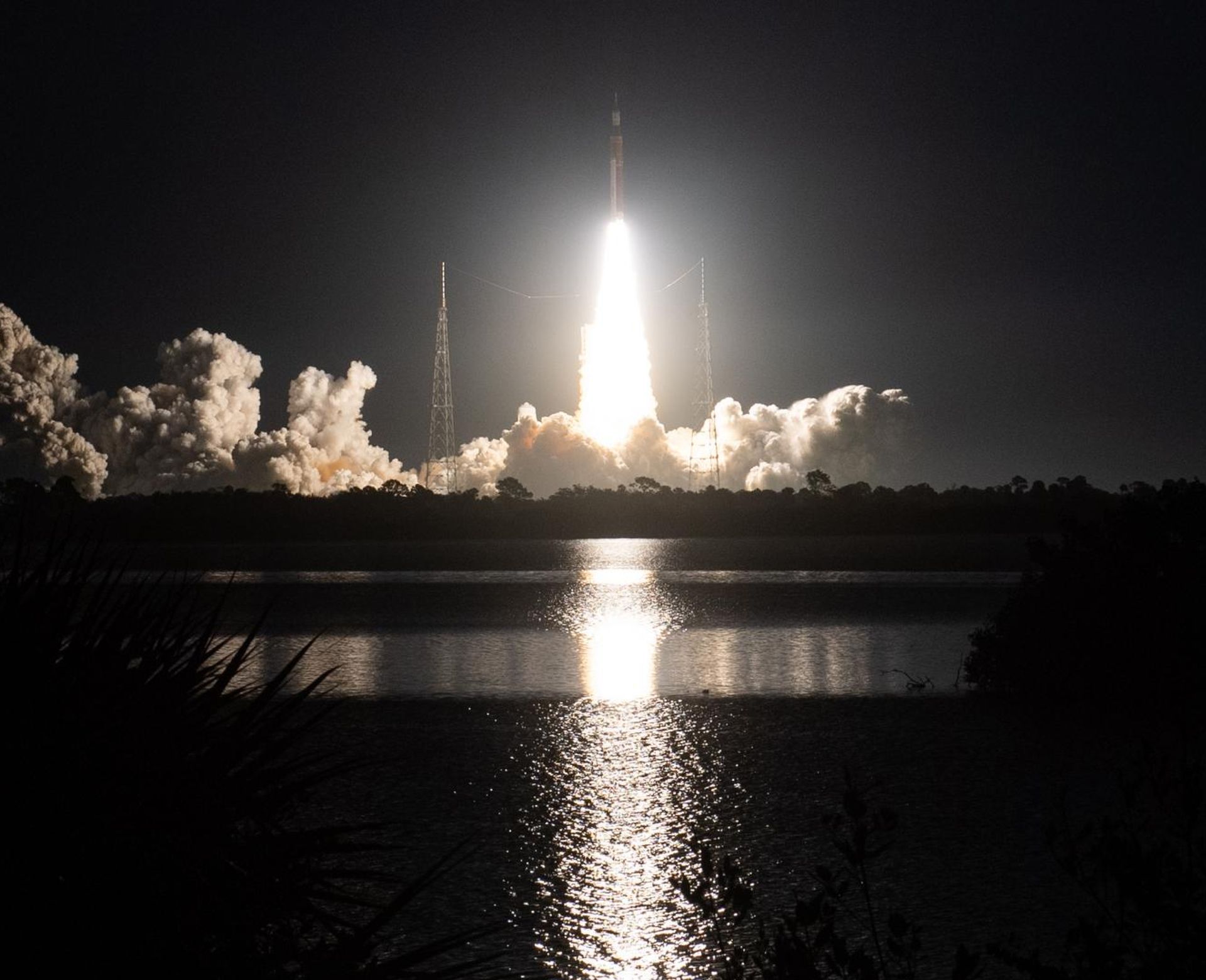
(Image: NASA/Bill Ingalls)
As expected, this week, President-elect Donald Trump appointed Elon Musk to head the new US Department of Government Efficiency (DOGE), tasked with driving structural reform, cutting federal costs, and introducing a “never-before-seen” entrepreneurial approach, according to Trump. Musk, concerned about rising US debt, claims to have already identified $2 trillion in potential government savings, and his enhanced role is likely to impact US space strategy significantly in the coming years.
According to Space.com, policy experts expect the Trump administration to foster a friendlier regulatory environment, benefiting Musk’s ventures, including SpaceX, which has faced Starship launch delays from the Federal Aviation Authority (FAA).
Reports suggest that Musk has already requested senior government positions for SpaceX employees, with Casey Dreier, chief of space policy at The Planetary Society, noting that regulatory changes could “benefit the pace of Starship development.” SpaceX is gearing up for its next Starship test flight on November 18, and has announced an ambitious goal of around 25 launches next year, aiming for full Starship recovery.
SpaceX also envisions expanding the U.S. footprint in Mars exploration. In September, Musk indicated they plan to launch Starships to Mars by 2026. Also, a presentation given this week during the meeting of the Mars Exploration Program Analysis Group pitched SpaceX’s “Marslink”, a Starlink network for Mars to ensure communication and interoperability between ground and orbital assets. Currently, Starlink dominates low Earth orbit, accounting for 7,000 of the 10,000 active satellites.
Will Renewed US Leadership in Space Come at the Expense of Science and Sustainability?
US leadership in space may be strengthened under the new president, with a deregulated commercial sector potentially benefiting SpaceX, already the leader in the field.
However, not all areas of US space will be spared from challenges. NASA, for example, is facing dated infrastructure, inefficient management, and difficulties keeping up with rapid technological advancements, according to a September report from the US National Academies of Sciences, Engineering, and Medicine. Budget cuts from Congress add to these issues.
These challenges are evident in delays and cost overruns in the Mars Sample Return project and the cancellation of the NASA VIPER lunar rover. A recent article from The Register suggests that, under the Trump administration, U.S. space leadership could come at the expense of Earth science missions and climate research.
Shifting away from science and climate research in space could be a major setback, especially as global initiatives, such as through the UN, actively highlight the benefits of space technology in achieving the Sustainable Development Goals (SDGs), including SDG 13 on Climate Action. In partnership with the European Space Agency, the UN Office for Outer Space Affairs published a compendium detailing how space can help achieve all 17 SDGs (compendium can be found here). World Space Week in October also underscored the transformative impact of space technology in the fight against climate change.
Nonetheless, by boosting US investment in projects like the Artemis program and fostering commercial innovation in space, the US could accelerate its efforts to outpace China in the evolving space and lunar race.
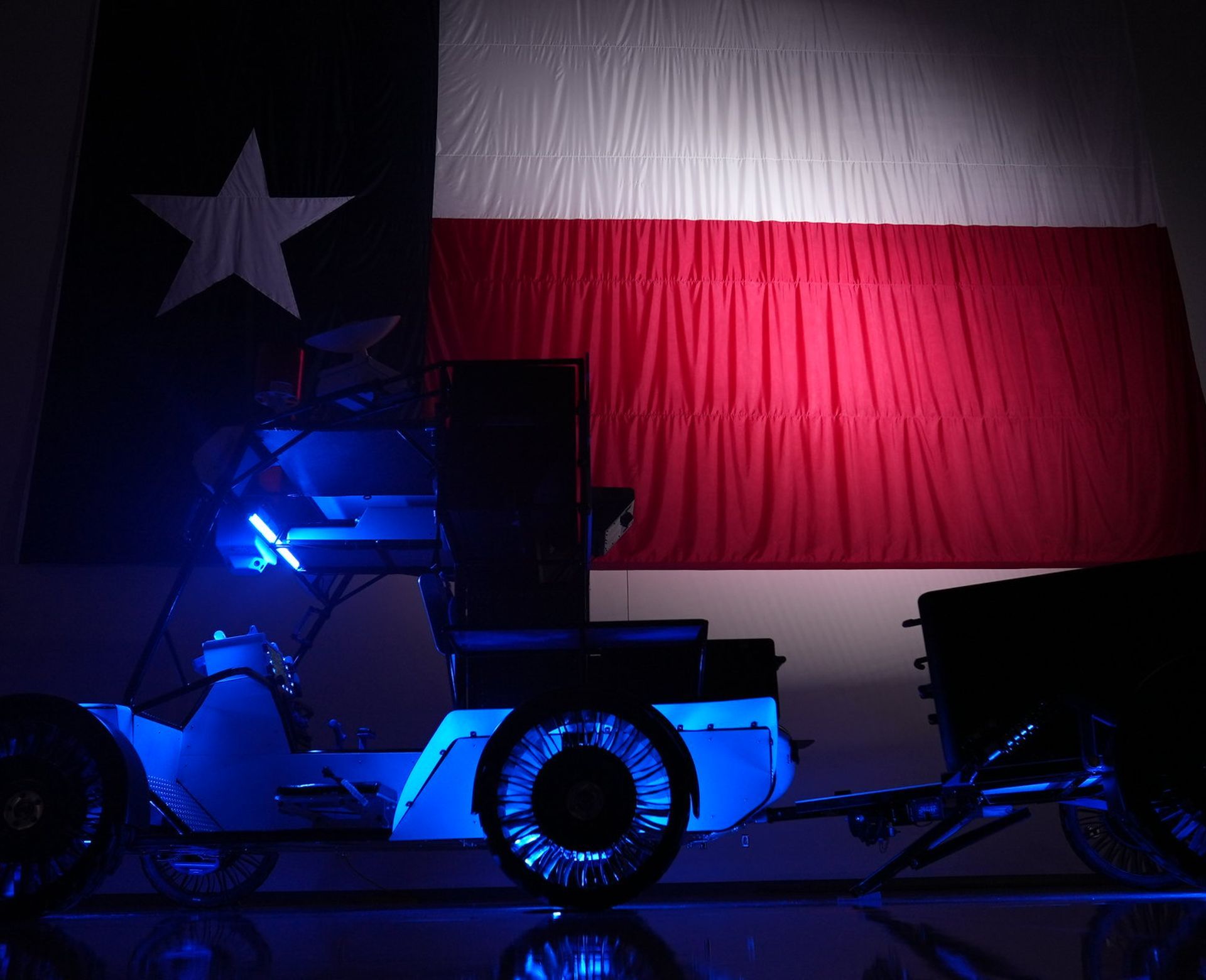
(Image: Intuitive Machines)
Intuitive Machines: an example of commercial success?
Alongside SpaceX, the new administration may also find strong support for companies such as Intuitive Machines and Firefly Aerospace. The former achieved their first successful commercial lunar landing in February, while Firefly is set to attempt its first lunar landing as early as December.
This week, Intuitive Machines also revealed its prototype for their crewed lunar rover, developed under NASA's Lunar Terrain Vehicle (LTV) program. The Reusable Autonomous Crewed Exploration Rover (RACER) can carry two astronauts and up to 400 kg of cargo, with an additional trailer capable of transporting 800 kg.
While commercial U.S. space companies like Intuitive Machines are leading the charge, they still depend on NASA funding through initiatives like the Commercial Lunar Payload Services and LTV programs for financial and customer support—areas the Trump administration may look to strengthen.
However, Intuitive Machines CEO Steve Altemus this week emphasised that his company is poised to offer a "full stack" of services, providing everything needed for missions to the Moon, on the Moon, and around it. This positions Intuitive Machines not only as a NASA contractor but as a fully commercial space services provider.
In addition to their successful lunar landing, Intuitive Machines has two more missions scheduled for 2025, is one of three teams chosen to develop a lunar rover under NASA’s LTV program, and, in September, secured a $4.8 billion contract with NASA to build a satellite constellation for navigation and communications on lunar missions.
The company is positioning itself as a key player in lunar exploration, providing delivery services to the Moon, mobility on its surface, and critical communications infrastructure via lunar orbit—essentially creating a "platform for a lunar economy," as described by Altemus.

(Image: Pixabay)
Trump’s Re-election Sparks Crypto Surge, Potential Use of Blockchain and Dogecoin in Space
Since Donald Trump’s re-election last week, there have been notable market reactions, with the US dollar reaching its highest level in a year and speculation on how his presidency might affect global dynamics. Investors also poured money into cryptocurrencies, pushing Bitcoin to record highs above $90,000.
Trump has previously announced ambitious plans for Bitcoin, stating that under his presidency, the US would retain all its Bitcoin reserves and adding, “If crypto is going to define the future, I want it to be mined, minted, and made in the USA.”
However, it was Elon Musk’s favoured cryptocurrency, Dogecoin, that also gained attention this week, outperforming Bitcoin and reaching new three-year highs. The value of Dogecoin—sharing the same trading acronym 'DOGE' as the new government advisory department—surged after the announcement that Musk would head it.
Musk has previously incorporated Dogecoin into Tesla, using it as payment for certain products, and accepted a Dogecoin payment from Geometric Energy Corporation for a delay in delivering their DOGE-1 satellite due to launch with SpaceX. The DOGE-1 mission, fully funded by Dogecoin, will collect lunar-spatial intelligence and display digital art and ads on a screen, which will be broadcast back to Earth.
Also, former SpaceX Vice President Tom Ochinero has previously said DOGE-1 “will demonstrate the application of cryptocurrency beyond Earth orbit and set the foundation for interplanetary commerce.”
Dogecoin isn’t the only blockchain application being explored for space. Marscoin aims to create a “decentralized, autonomous currency system” to overcome communication delays and resource limitations, while SpaceXcoin seeks to “dominate the next generation's multiplanetary exchange systems.”
Meanwhile, organisations like MoonDAO and SpaceDAO are exploring how to build transparent governance systems using Decentralised Autonomous Organisations (DAOs), blockchain-based systems that enable distributed governance through smart contracts and tokenised voting.
It’s unclear how the Trump administration might incorporate blockchain and cryptocurrencies with their plans for the space economy, but we do know about Musk’s historic support for Dogecoin and his goal to put “a literal Dogecoin on the literal moon” (2021 x.com post).
Share this article


